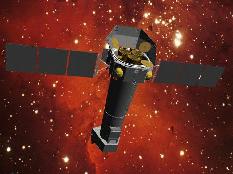 |
XMM |
 |
XMM |
 Contents
ContentsIntroduction
The OM Telescope
The Filter Wheel
The Detectors
Links to further information
 Introduction
IntroductionXMM, although primarily an X-ray observatory, provides a powerful optical/UV 30 cm telescope which is co-aligned with the X-ray telescopes for simultaneous X-ray and optical observations.
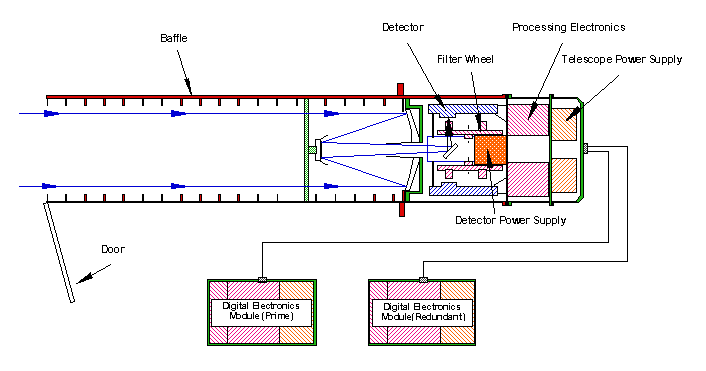
 The telescope
The telescope
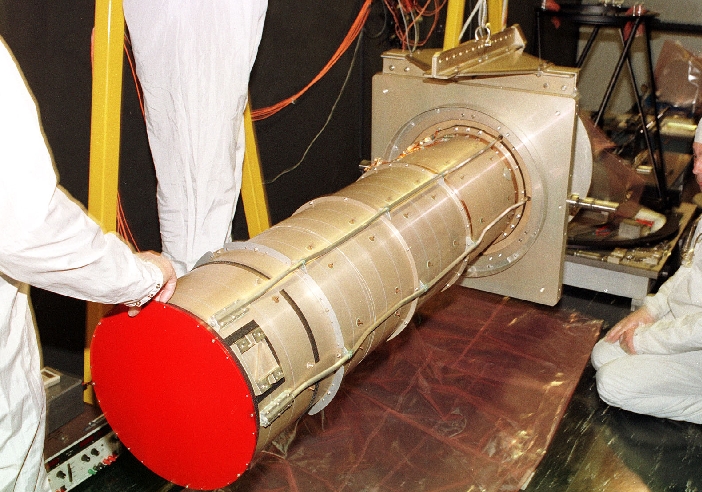
| This is a view from the front of the telescope tube looking down onto the primary mirror, showing the secondary mirror support and the baffle in the reflection. The secondary mirror is not in place. Note how the brightess decreases as the light is absorbed by the baffle. |
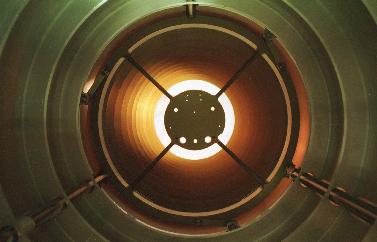 |
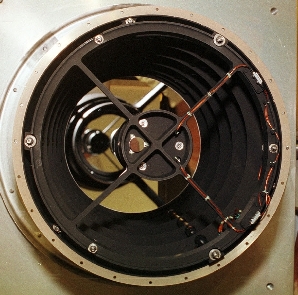 | Here, we have taken off most of the baffle and left only the the segment closest to the square piece, the one that contains the actual telescope. We're looking down in the same direction as the incoming light and now we can see the primary mirror, waiting to reflect the incoming light, and the mounting structure for the secondary mirror in front of it. In fact, you can see reflected in the primary mirror the secondary mirror, which is itself reflecting the "tube" in the middle of the primary. |
| This is the mirror mounting structure, which is made of Invar for low thermal expansion. This fits inside the baffle and holds both the primary and the secondary mirrors in place. In this picture, the primary mirror sits at the bottom and the secondary mirror directly above it, facing it. The light comes from the top and gets reflected by the primary mirror onto the secondary mirror. The secondary mirror in turn reflects it through the narrow tube at the bottom onto yet another mirror behind the primary, which then reflects the light by 90 degrees onto the filter wheel and the detector. |
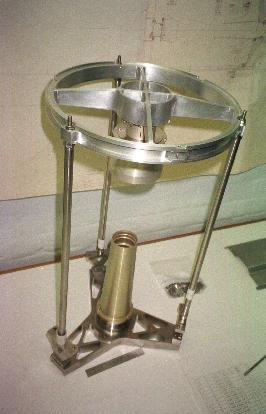 |
 The Filter Wheel
The Filter WheelIn addition, there is a facility for more detailed imaging of the centre of the field of view through a x4 magnifier contained in the OM's filter wheel.
Here's a photograph of the OM filter wheel, with no filters mounted on it.
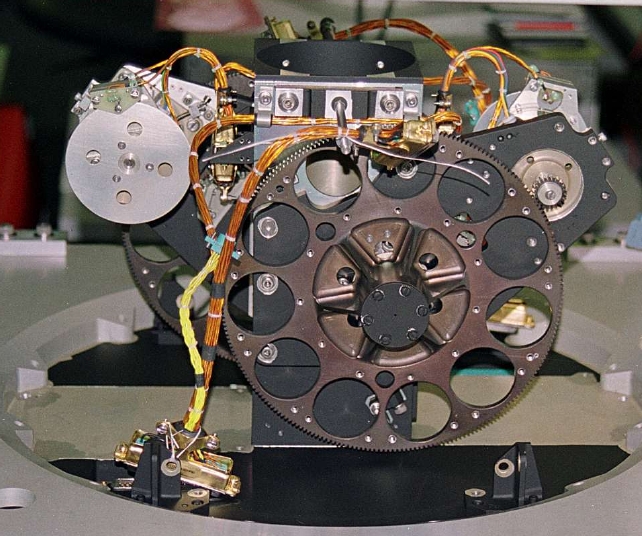
 The Detectors
The Detectors
 Further Information
Further InformationHow about a Tour of the OM?
Check out the University of California Santa Barbara (UCSB) OM pages.
A description of the (expected) scientific performance of XMM and its instruments is provided in the XMM Users' Handbook.
Have a look at the ESTEC "Building XMM" web pages - they hae many more OM photos for you to look at but be warned - they can take a bit to download! They are worth the wait though.
The ESTEC pages also have the information about the responsibilities of each institute towards the construction of the OM.
The MSSL OM site also has lots of information, photographs and documentation. It can be a bit technical.
The Centre Spatial de Liege (CSL) contribution to the OM.
The Institut d'Astrophysique de Liege has an introduction to XMM in French.
Find out more about the other XMM instruments: Back to the XMM schematic view.
These pages are adapted from various sources, mainly from the ESTEC page "Building XMM" and the Mullard Space Science Laboratory.
Various parties require acknowledgement for the photo material. Particular thanks are due to the Mullard Space Science Laboratory, the XMM Project team at ESTEC, Centre Spatial de Liege, Medialario, Dornier, Max-Planck-Institut für extraterrestrische Physik (MPE) and the Space Research Organization of the Netherlands (SRON), Utrecht.
Last updated: Thu Mar 4th 1999